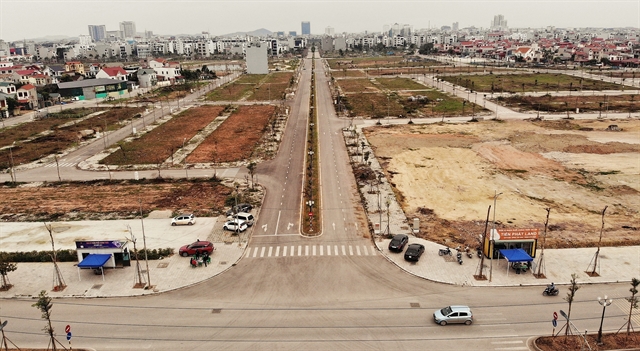Việt Nam’s 2024 Land Law is now undergoing major revisions even before its full rollout, as the Government faces mounting administrative, legal and valuation roadblocks.
Compiled by Lê Việt Dũng

Việt Nam's 2024 Land Law was praised as a historic overhaul to untangle decades of complex land management issues and align the nation with market principles.
However, even before its full implementation, the Government has already proposed significant amendments. This rapid course correction stems from a clash between the law's ambitious reforms and the complex realities of administration, investment and valuation on the ground.
Here’s a deeper look at what the 2024 law aimed to achieve, the critical problems that have emerged and how the proposed fixes could reshape Việt Nam's economic landscape once again.
The promise of reform
The previous Land Law, enacted in 2013 with 14 chapters and 212 articles, was a product of its time. After a dozen years of implementation, it had become a barrier to progress.
Its most significant flaw was the government-dictated land price framework, a rigid price list issued by the Government once every five years. This framework failed to reflect actual market values, creating distortions and fuelling disputes.
Driven by a clear political mandate from the Việt Nam Communist Party Central Committee's Resolution 18 from 2022, the 2024 Land Law was drafted not as a simple update but as a systemic overhaul.
The scale of the reform was immense: 180 of the 212 articles in the 2013 law were amended, and 78 entirely new articles were added. The core pillars of this reform were revolutionary.
The most celebrated change was the elimination of the land price framework. Power was decentralised to local authorities, with provincial-level People's Committees [Administration] now responsible for developing an annual land price list, to be approved by the People's Councils [Assembly].
Crucially, Article 158 of the new law explicitly stated that all land valuation must adhere to market principles. This marked a fundamental philosophical shift from a government-mandated system to one based on real-world supply and demand.
The first of these new market-based price lists is scheduled to take effect nationwide in January 2026.
In a deeply humane policy, the law extended the deadline for households and individuals to have their long-held, non-disputed land officially recognised with a certificate of land use rights.
By moving the cut-off date for consideration from 2004 to July 1, 2014, the law opened a path for millions of citizens to legalise their assets, enabling them to access formal credit and participate more fully in the economy.
The law introduced several other critical changes. The first removed the ambiguous legal entity of 'household' as a land user. Instead, land rights are now granted to the specific individuals within a household, a change designed to minimise the complex inheritance and ownership disputes that plagued families for years.
Next, to encourage large-scale, modern farming, the law increased the amount of agricultural land an individual can acquire to 15 times the standard allocation limit. It also broke new ground by allowing non-farmers to purchase rice paddy land, aiming to attract new investment into the sector.
Also, for the first time, the law dedicated specific articles to the rights and obligations of all citizens regarding land, not just direct land users. This recognised the shared national responsibility for protecting and developing this finite resource.
Why the law hit a wall
Despite its forward-thinking design, the law's interaction with Việt Nam's existing administrative and economic systems quickly revealed significant friction points.
The Ministry of Agriculture and Environment (MAE) has proposed amendments to the law and identified several critical areas where theory and practice diverge:
The first is conflict with administrative reform. The 2024 Law was built around a three-tier land planning system of province, district and commune. However, in July, Việt Nam abolished the district-level government, shifting to a two-tier model.
This renders the legally required annual district-level land use plans instantly obsolete, creating what officials refer to as unnecessary administrative procedures that waste time and resources.
Furthermore, the law's provision to use existing urban and rural plans instead of creating new land use plans has been ineffective, as these plans often don't cover entire administrative boundaries, forcing localities into duplicative planning work.
Another critical area involves gridlock in land access and recovery. Procedures intended to ensure fairness have instead given rise to a series of critical bottlenecks that stall development.
In terms of procedural hurdles, the law's reliance on auctions and bidding to allocate land is tied to the complex regulations of the Law on Property Auction and the Law on Bidding. These lengthy and complicated processes have occasionally led to failed auctions and an inability to select suitable investors, delaying projects.
Additionally, the law lacks clear mechanisms for the State to recover land for high-priority projects essential for national development, such as logistics hubs, free trade zones, international financial centres and large-scale cultural or tourism complexes.
There is also the 'holdout' issue, with the most acute manifestation of this issue being the stalled project. Investors who successfully negotiate land transfers with the vast majority of residents can be blocked from proceeding by a small number of holdouts.
Without a mechanism to resolve this impasse, projects become stuck in limbo, wasting immense resources.
Meanwhile, the law creates a price disparity where compensation for expropriated land is determined by a specific land price, while land given for resettlement is valued according to the official land price list.
This, coupled with the difficulty of accurate valuation, encourages landowners to demand inflated cash payouts or land swaps, complicating negotiations and driving up costs.
The law's cornerstone – market-based valuation – has ironically become its biggest headache. The mandate to determine an accurate market price has paralysed many local officials. Fearing legal repercussions for valuations that might later be deemed incorrect, they have become overly cautious, leading to delays in approving land prices for projects.
It also creates contradictions. In the primary market (when the State allocates or leases land), the State is supposed to be the one deciding the price.
However, the law makes this decision dependent on volatile secondary market prices and the opinions of private consultants. This, officials argue, means the State is no longer in control but is forced to chase the market.
"Land prices have recently increased to very high levels, partly due to a lack of State control," said Đào Trung Chính, director of the MAE's Land Administration Department, in an interview with the Tiền Phong (The Vanguard) newspaper in early August.
"These amendments to the law must clearly articulate the State's role – to control and decide land prices, not to chase the market."
On top of all that, the residual method of valuation, a key tool, relies on past data that often fail to capture the future value of a development project, making the resulting prices inherently flawed.
Pragmatic course correction
The draft amendments seek to address these bottlenecks with a series of targeted, practical fixes.
In the most significant proposed change, the amendments remove the phrase 'market principles' from the law's core valuation article. This would re-establish the State's role as the final decider of land prices, with valuation reports from consultants serving as a source of reference, not as a binding determinant.
A more flexible price list is being proposed. To manage valuation, two options are on the table. Both rely on a land price adjustment coefficient issued annually to update a base price list, avoiding the need for a complete and costly overhaul every year. This offers a hybrid approach, combining the stability of a multi-year list with the flexibility of annual adjustments.
Solving the holdout issue is also paramount. The proposal introduces a "75-per-cent rule". If an investor successfully negotiates with landowners for at least 75 per cent of the project's total area or with at least 75 per cent of the households involved but fails to secure the remaining land through negotiation, the State would be empowered to step in and acquire the remaining land. This is designed to break negotiation deadlocks and get stalled projects moving.
Meanwhile, the amendments explicitly add strategic projects, such as those for major international events, free trade zones and logistics hubs, to the list of cases where the State can recover land for socio-economic development.
To speed up timelines, the draft law allows for land recovery to proceed before the final compensation plan is approved, provided that the landowners agree. Businesses would also be given the flexibility to pay land rent annually or in a single lump sum, aiding their financial planning and ability to secure loans.
Finally, building a data backbone is deemed crucial. Recognising the need for data-driven management, the draft sets a firm deadline: the national land information system must be completed by the end of 2026 to create a unified, transparent database from the central to local level.
Việt Nam is engaged in a real-time stress test of its landmark legislation. The proposed amendments represent a pragmatic retreat from pure market theory in favour of a more state-guided approach, aiming to fix the parts of the 2024 law that have proven unworkable, and unleash the development it was designed to foster. VNS




